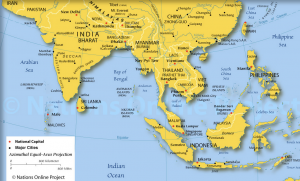I saw an Associated Press blurb on Monday that piqued my interest. Amidst the varying news reports (mentioned by Brooke here) that climate change and drought are raising the world's food prices, and the others pointing to rising poverty and hunger rates in the United States, the National Intelligence Council says that world poverty rates could be reduced by half by 2030.
The AP article was interesting to me on a couple of levels. First, the NIC pointed to a rising middle class in the growing economies in India, Vietnam and Indonesia as the driving force behind the poverty reduction; and, second because 2030 is less than two decades from now, which doesn't really seem all that far off.

But can we, or better, should we, wait until 2030 to see those numbers drop that dramatically? I don't think so. Sure the article is great news, and, yes, Heifer already works in both India and Vietnam, helping turn small farmers into small businessmen and women. Plus the article says that poverty reduction in these economies will continue despite economic upheaval, too. Even better!
So if what Christopher Kojm said on Saturday is right, that, "several hundred million people, armed with the resources and education will produce new technology to meet demands for food, water and energy," don't you think we can help them along?
I do. Heifer is already working to help create this burgeoning population of people. And we're working harder and faster than ever before in areas that need it most—including the United States. Why don't you help us?